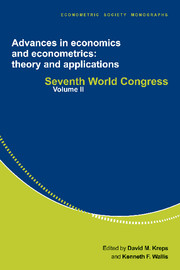Book contents
- Frontmatter
- 1 Incentives and careers in organizations
- 2 Endogenous growth: lessons for and from economic history
- 3 Microtheory and recent developments in the study of economic institutions through economic history
- 4 Poverty traps
- 5 Microenterprise and macropolicy
- 6 Markets in transition
- 7 Transition as a process of large-scale institutional change
- 8 A Schumpeterian perspective on growth and competition
- 9 Learning and growth
- Index
4 - Poverty traps
Published online by Cambridge University Press: 05 January 2013
- Frontmatter
- 1 Incentives and careers in organizations
- 2 Endogenous growth: lessons for and from economic history
- 3 Microtheory and recent developments in the study of economic institutions through economic history
- 4 Poverty traps
- 5 Microenterprise and macropolicy
- 6 Markets in transition
- 7 Transition as a process of large-scale institutional change
- 8 A Schumpeterian perspective on growth and competition
- 9 Learning and growth
- Index
Summary
INTRODUCTION
This chapter is about poverty traps. My aims are to explore some of the mechanisms that create and sustain them, and to suggest patterns of public policy for countering them. I will be concerned with certain manifestations of the phenomenon as it occurs in poor countries, such as those in the Indian sub-continent and sub-Saharan Africa. But there may well be other manifestations, even in poor countries, that are not covered here. That there are poverty traps in rich countries is also a claim that is increasingly heard (see section 1.1). Even though the economic mechanisms prevailing there could be expected to be different, the mathematical structures underlying them are likely to be similar. However, I have not been able to demonstrate this in the context of an intertemporal model based on adequate microeconomic foundations. So my approach will be piecemeal. I will look at two models, suitable for an analysis of certain kinds of poverty traps within poor countries. The models are different, focusing as they do on different themes. One studies the biomedical phenomenon of undernourishment and the poverty traps that are allied to it; the other looks at poverty traps associated with high birth rates and deterioration of the local environmental resource base. I apologize for the disparateness, but I have found no simple, overarching model that picks up all the features I want to highlight here.
- Type
- Chapter
- Information
- Advances in Economics and Econometrics: Theory and ApplicationsSeventh World Congress, pp. 114 - 159Publisher: Cambridge University PressPrint publication year: 1997
- 1
- Cited by



